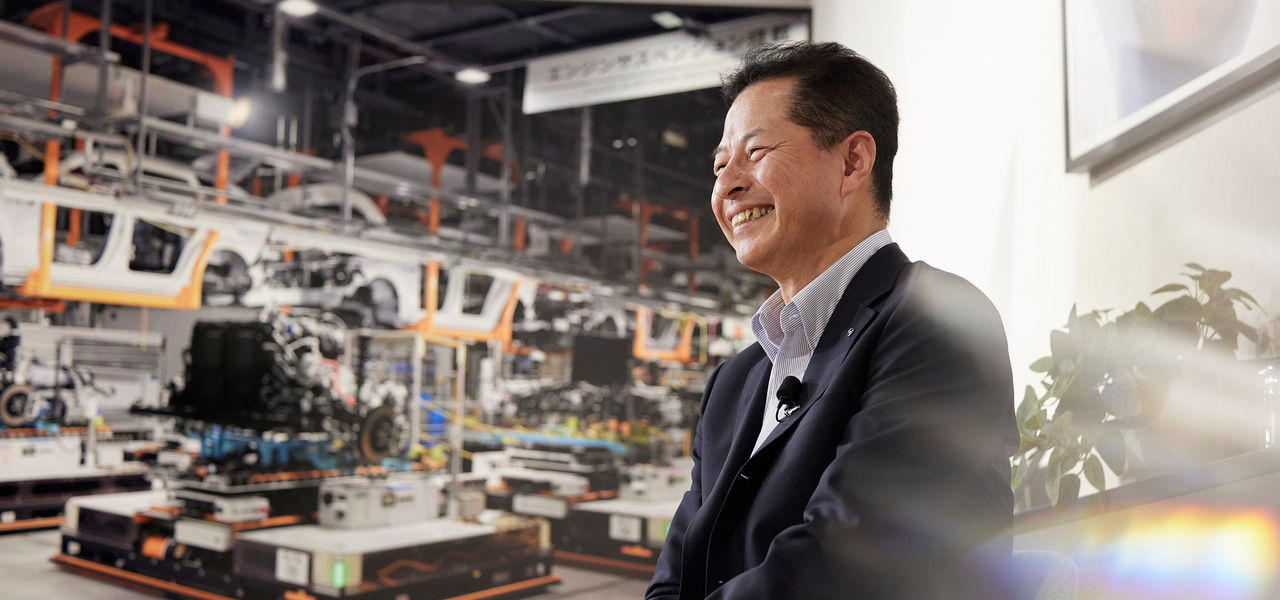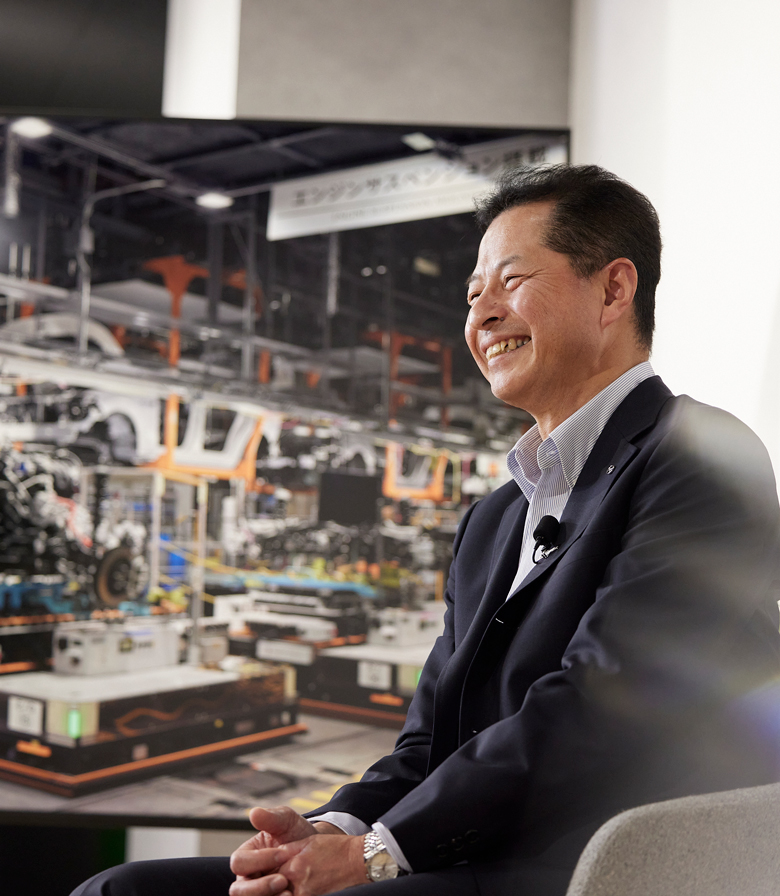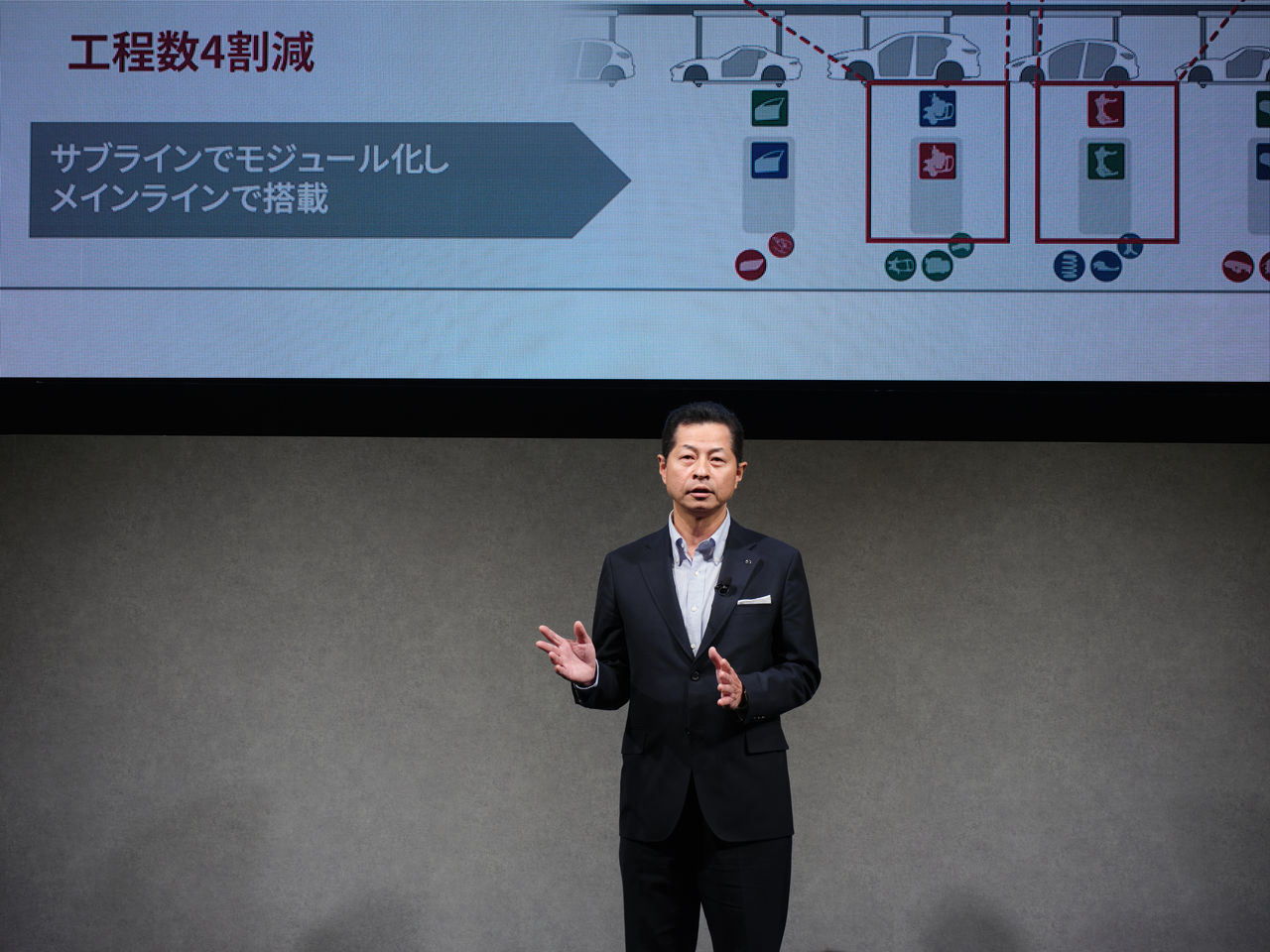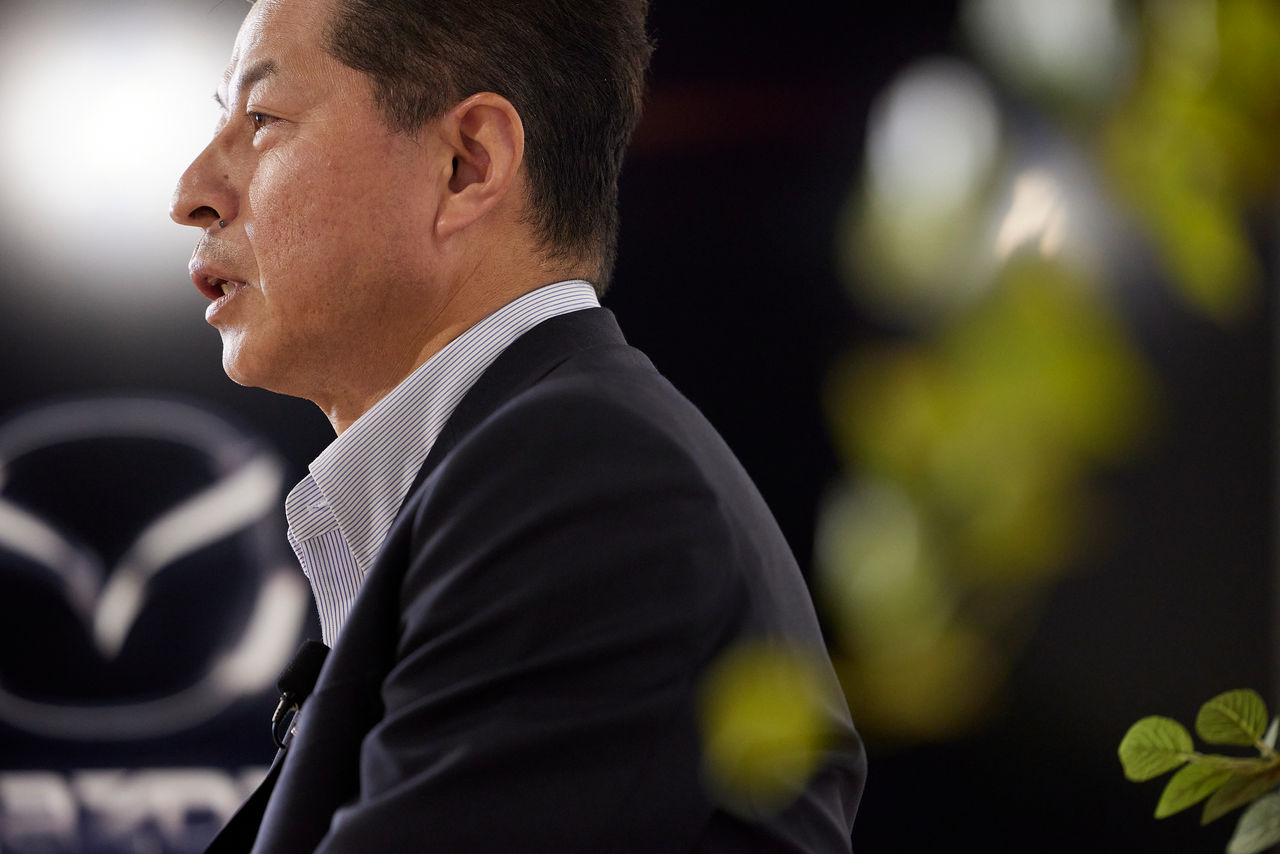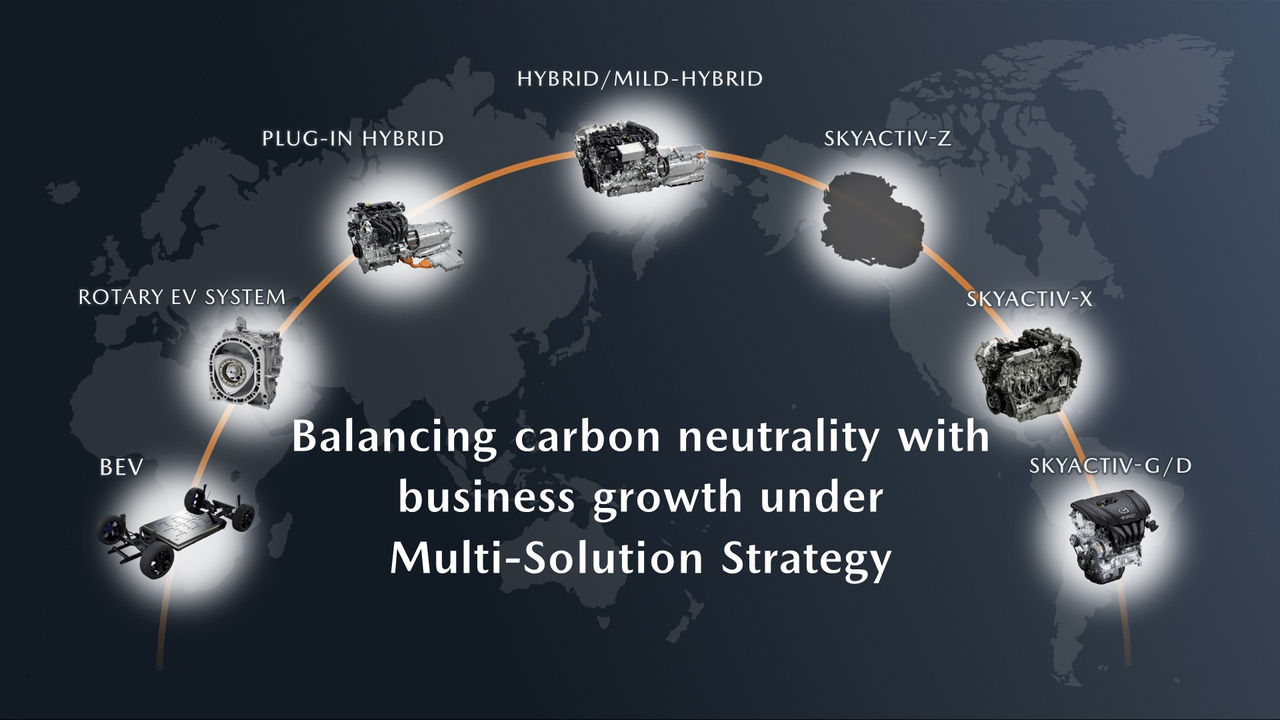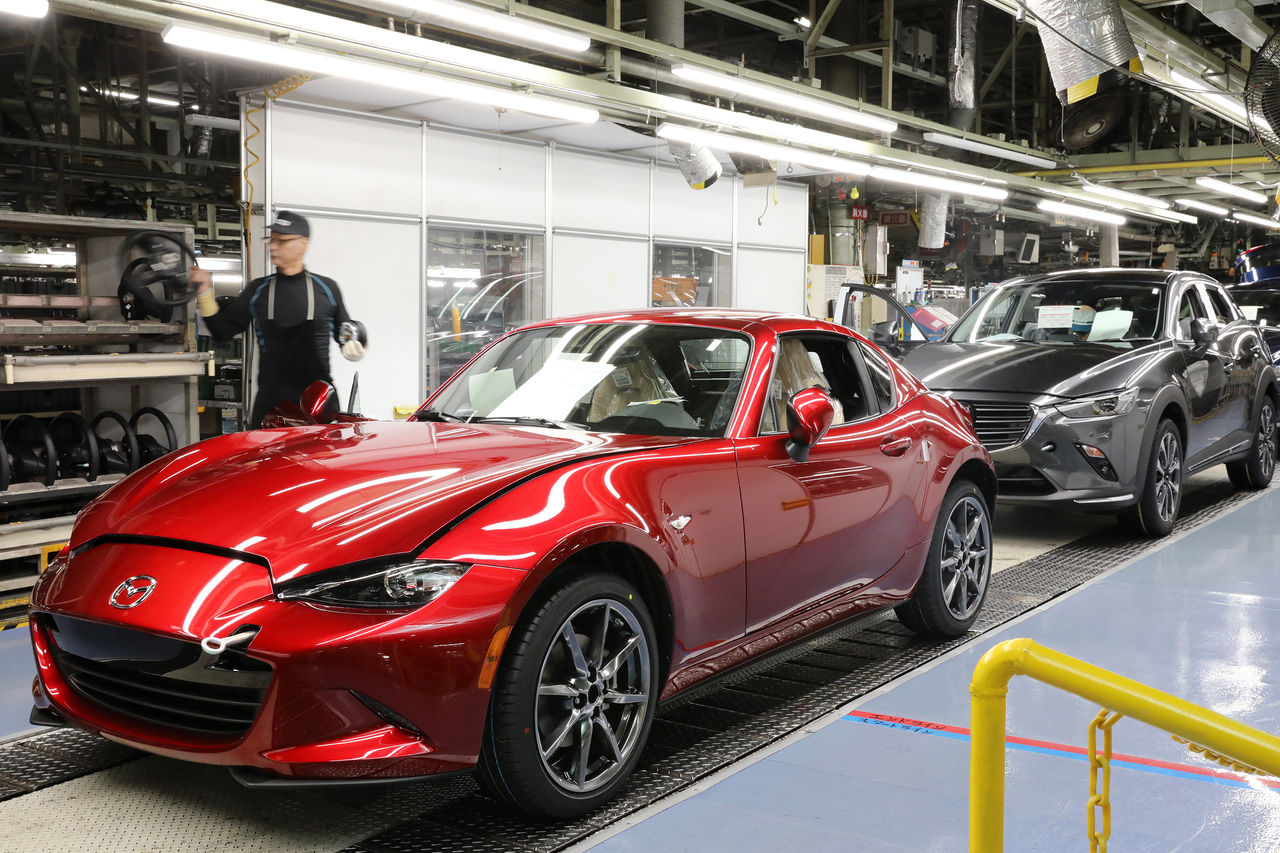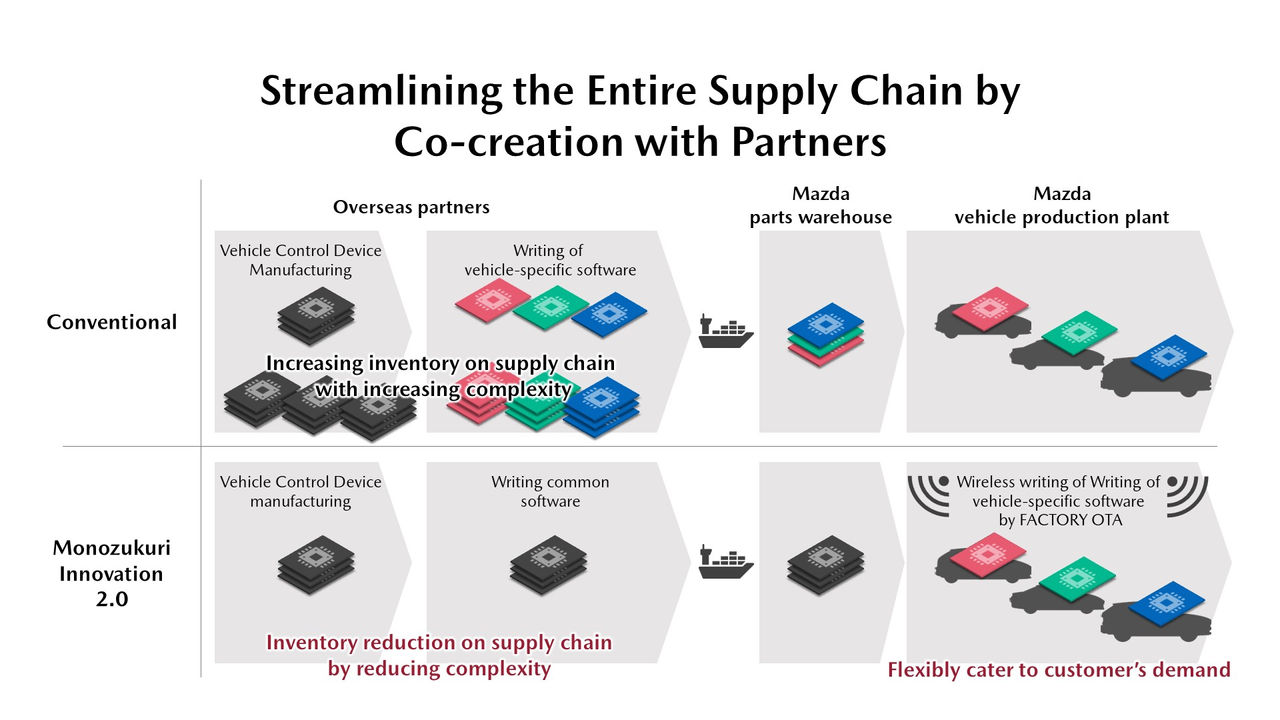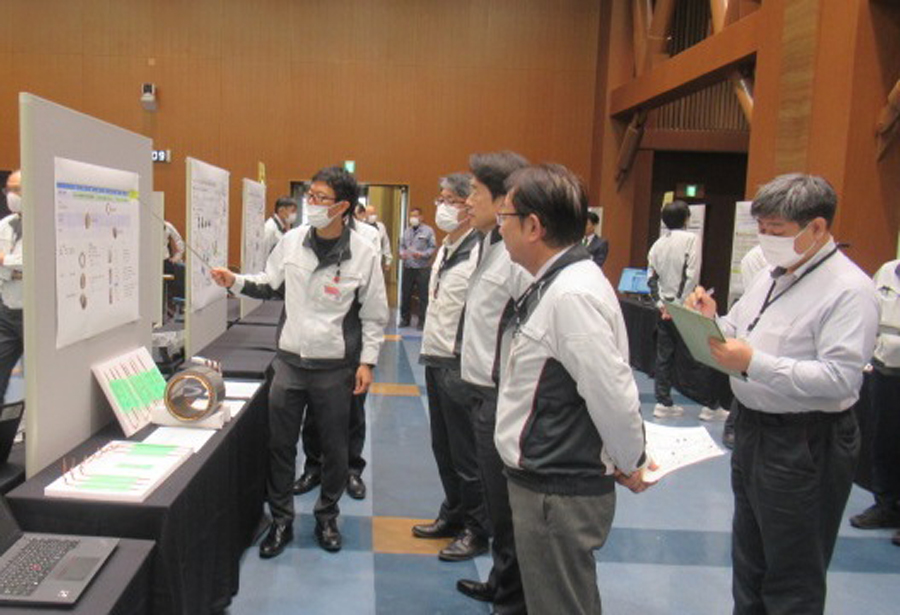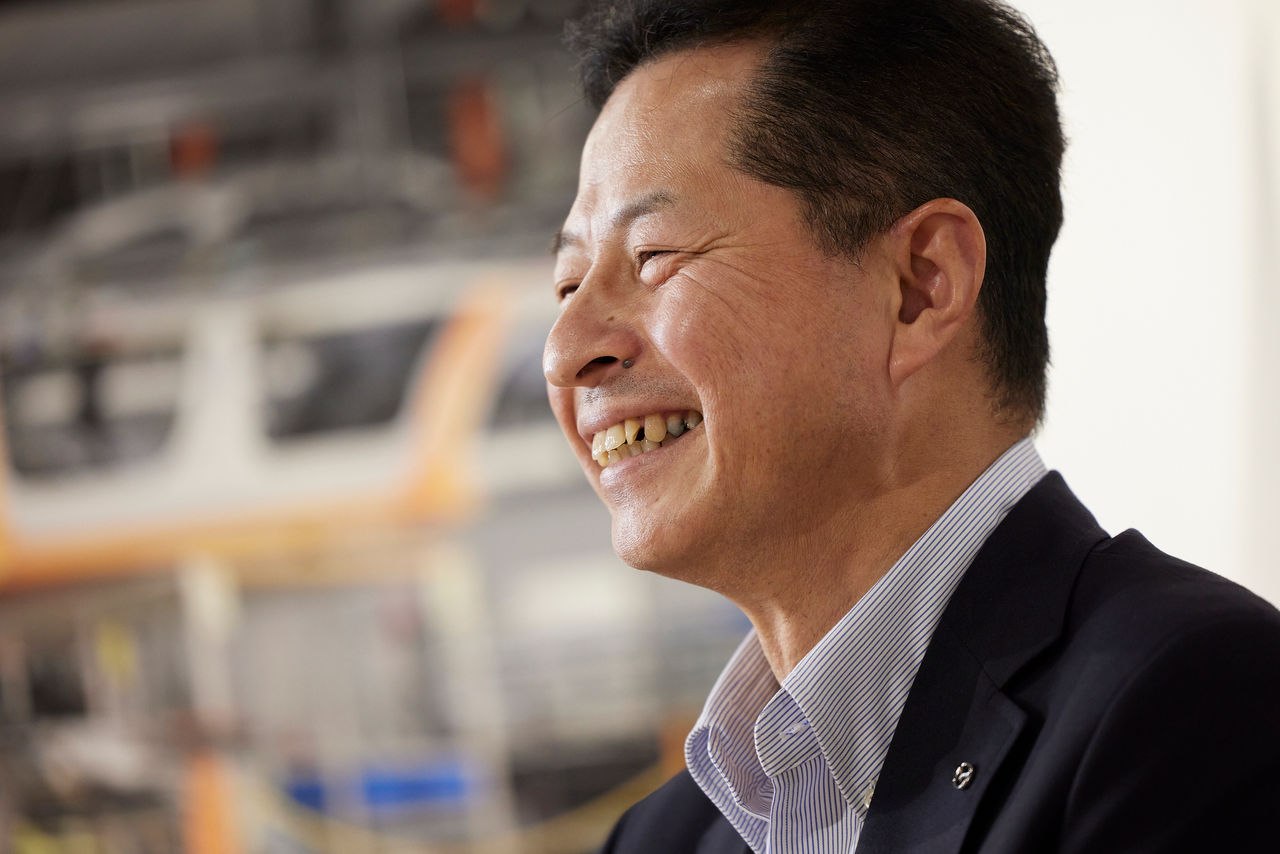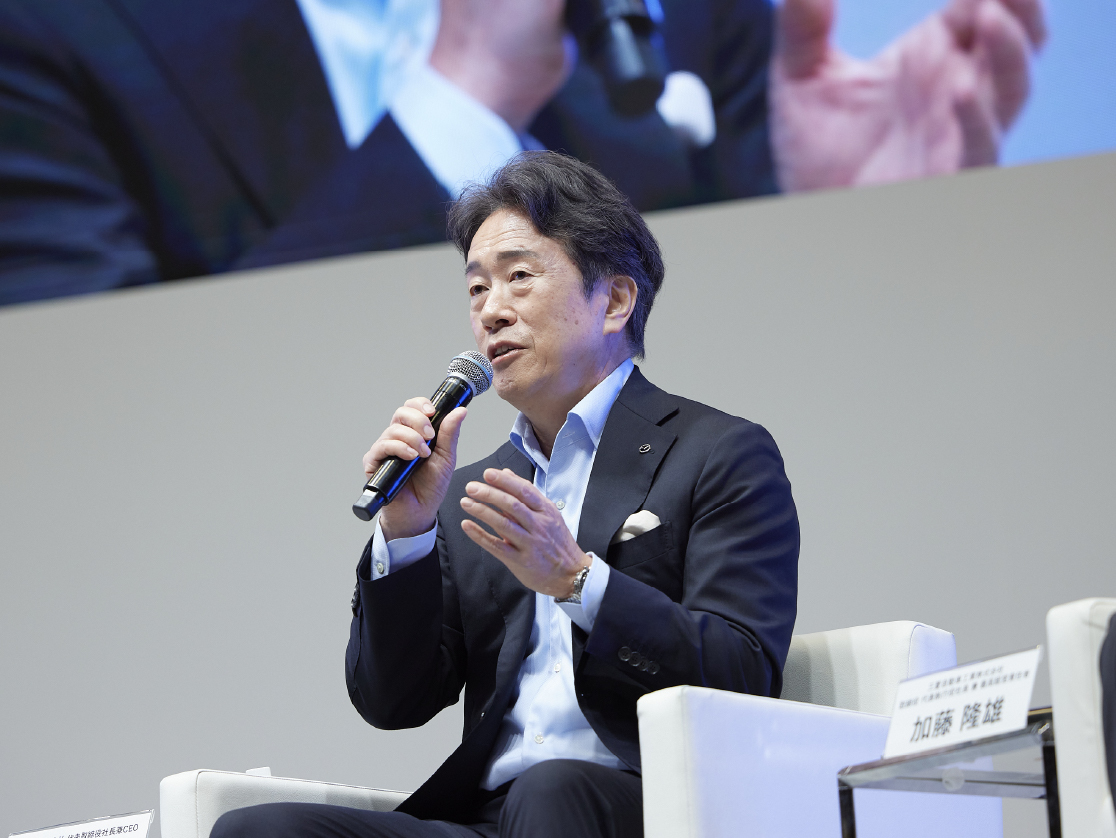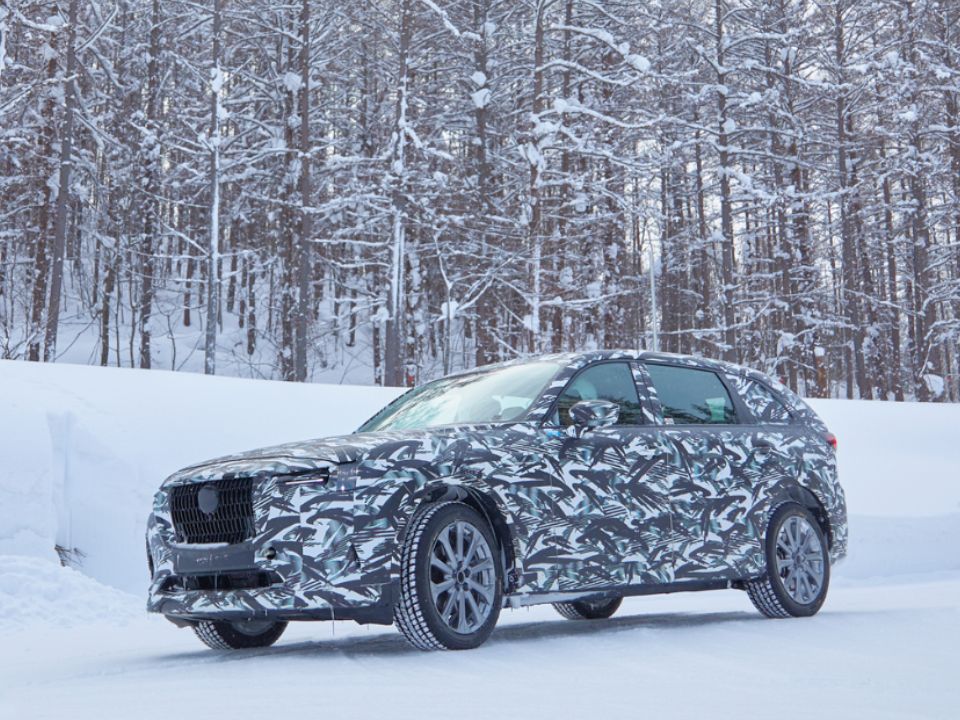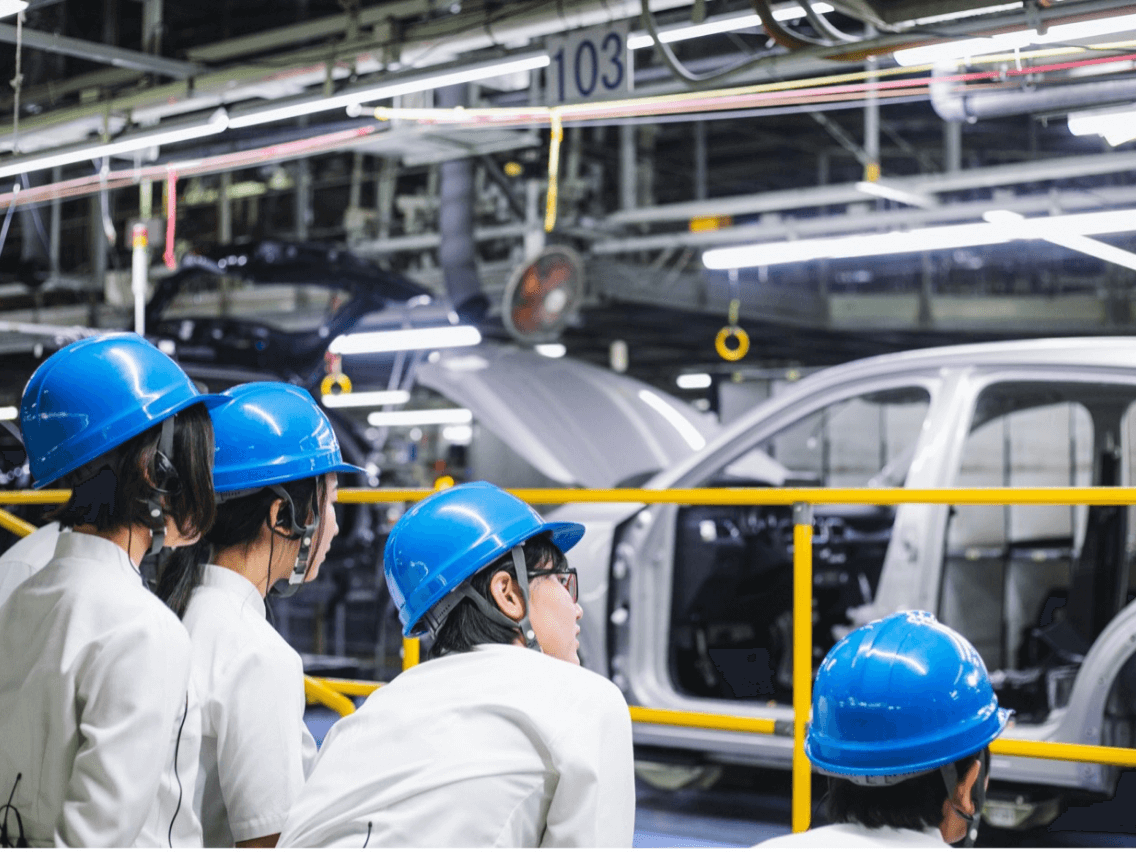Cars of today are expected to deliver on multiple fronts, from basic mobility performance like driving, stopping, and turning, to electrification, intelligence, and carbon neutrality. These expectations grow yearly, and meeting them is the responsibility of all car manufacturers.
We face an era where production technology is just as significant as vehicle development. How is Mazda, a niche player, working to ride the turbulent waves of what's been called a "once-in-a-century transformation”? Taketo Hironaka, Managing Executive Officer, answers this question as he shares the philosophy behind Monozukuri Innovation 2.0.
